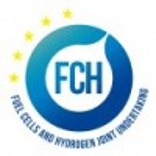DATA & FACTS
Project
HPEM2GAS – High Performance PEM Electrolyzer for Cost-effective Grid Balancing Applications (Subproject of the Emden/Leer University of Applied Sciences)
Scientific contact
Prof. Dr. Sven Steinigeweg
EU-Funding line
HORIZON 2020
Keywords
Electrolyzer, Network management, hydrogen
Projektleitung: Prof. Dr.-Ing. Arno Kwade
Projektname: „Li-Ion Pilot Lines Network“ (LiPLANET)
Keywords: Energie, Mobilität, Partner

This project has received funding from the Fuel Cells and Hydrogen 2 Joint Undertaking under grant agreement No 700008. This Joint Undertaking receives support from the European Union’s Horizon 2020 research and innovation programme and Hydrogen Europe and N.ERGHY.
HPEM2GAS – High Performance PEM Electrolyzer for Cost-effective Grid Balancing Applications
The HPEM2GAS- project is developing a low-cost PEM electrolyzer optimized for grid management. By stacking and balancing the plant innovations, a six-month field test of an advanced 180-300kW PEM electrolyzer will be conducted.
Hydrogen is an alternative energy carrier mediating between energy distribution and renewables.
The HPEM2GAS project will develop a low-cost PEM electrolyser optimised for grid management through both stack and balance of plant innovations, culminating in a six-month field test of an advanced 180 – 300 kW PEM electrolyser. The electrolyser developed will implement an advanced BoP and improved stack design and components. Several strategies are applied to lower the overall cost, thus enabling widespread utilization of the technology. These primarily concern a three-fold increase in current density (resulting in the proportional decrease in capital costs) whilst maintaining cutting edge efficiency, a material uses minimisation approach in terms of reduced membrane thickness whilst keeping the gas cross-over low and reducing the precious metal loading. Further, improving the stack lifetime and a reduction of the system complexity without compromising safety or operability. All these solutions contribute significantly to reducing the electrolyser CAPEX and OPEX costs.
Vision and Objectives:
The overall objective of the project is to develop, validate and demonstrate robust, flexible and rapid response self-pressurising PEM electrolyser technology based on advanced cost-effective components and using novel solutions for interfacing to the grid. The aim is to prove the potential to reach the KPIs, CAPEX and efficiency targets as reported in the MAWP 2015 at a realistic production scale and volume.
Concept and Approach:
HPEM2GAS’s ambition is to realise breakthroughs in Proton Exchange Membrane water electrolysis technology for Distributed Hydrogen Production and to bring the innovative solutions demonstrated in previous FCH JU projects from TRL 4 to TRL 6.
Project Figures:
Project HPEM2GAS is funded under the framework of EU-Project Horizon 2020 with a funding volume of 2,5 million Euro. The project started in April 2016 and had a duration of 36 months. The consortium is comprised of 7 partners from 5 European countries, where the University of Applied Sciences Emden/Leer participate as one of beneficiaries and is financed with a distributed budget of approximately 73.000€.
HPEM2GAS Consortium:
National Council of Research – Italy,
ITM Power – England,
University of Applied Sciences Emden/Leer – Germany,
Solvay Specialty Polymers – Italy,
IRD Fuel Cells A/S – Denmark,
Stadtwerke Emden GmbH – Germany,
Uniresearch – The Netherlands

Authors:
Maik Schmeltzpfenning, Vi Le
Date:
24. March 2022
This might also interest you …

ProjeCt: Stimey
In an effort to bring science and society together in Europe, and consequently increase the continent’s international competitiveness, STEM (Science, Technology, Engineering and Mathematics) education must be more relatable to European youths to raise their interests and involvement in STEM careers.

